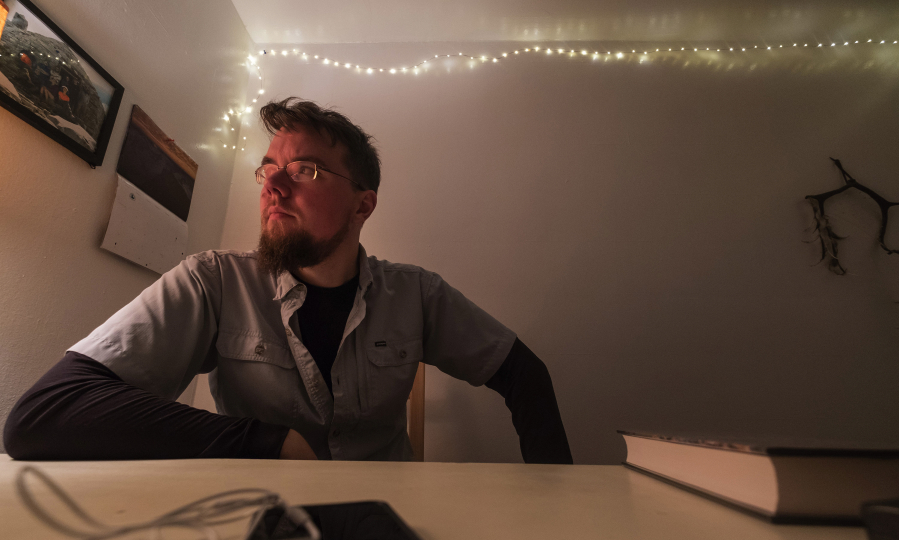SEATTLE — John Walker, formerly of Kentucky, made it through his first Seattle winter last year just fine, but recently he started feeling blue.
Suspecting a lack of brightness was the problem, he began taking vitamin D supplements and hung a small string of white Christmas lights in his bedroom, “so it would seem like the sun is rising” when he wakes, he said.
But it’s not working so far.
“I don’t know what happened; it feels like I just got hit by it really hard in a wave,” Walker said. “It’s hard to go to work in the dark and come home in the dark, and my body is saying, ‘Oh no, we have to go through this again.’ It feels like I’m having an existential crisis.”
He is not alone.
According to Seattle psychiatrist David Avery, who’s studied circadian rhythms — our “body clock” — the body’s temperature regulation and light therapy in the treatment of seasonal affective disorder for the past 25 years, nearly all of us living here near latitude 47 experience at least a little seasonal depression that’s tied to changes in seasons and, more specifically, the amount of light to which we are exposed.
Pacific Northwest residents see the sun rise and set in fewer than 8 1/2 hours by December. And what little daylight we get is often shrouded by clouds.
Avery said while there’s an estimated 5 to 10 percent of people who are severely affected by the disorder, and a group that seems to experience “no seasonality at all,” most of us fall somewhere in between.
We have less energy, sleep more, eat more, gain weight and have a hard time falling asleep and a hard time waking up during the fall and winter.
He explains: When light hits the retinas of our eyes, it stimulates certain receptors that send messages to the brain’s hypothalamus, which is like the “conductor of a symphony,” telling the body when to release hormones, such as melatonin and cortisol, and signaling when the body should cool down and warm up.
When things work correctly, it’s a nicely coordinated system.
“The melatonin level raises just before one naturally falls asleep; in the middle of the night melatonin starts dropping off and the (body’s) temperature starts rising,” he said.
Devices don’t help
When changes in light interrupt our circadian rhythms, our bodies and brains stay warm at night, which prevents sleep, and they stay cold in the morning, impeding wakefulness. Our device-obsessed culture doesn’t help, as the situation is exacerbated by the plethora of daylight-mimicking blue light in computer monitors, phone screens and televisions.
“A lot of people with winter depression are trying to wake up in the middle of their biological clock’s idea of night,” he said.
Though common and treatable, SAD is not always recognized as a mental-health issue, according to Pam Sheffield, a family physician with the University of Washington Neighborhood Clinics who has written about the disorder.
“It often feels like a physical body problem,” she said. It isn’t until someone has experienced it as a recurring and yearly issue that they sometimes start to see the pattern for what it is, she said.
Sheffield, Avery and people who’ve experienced SAD recommend spending time in front of light boxes that re-create the full spectrum of sunlight. Getting outside and exercising helps, too, according to Seattle Times readers who shared their stories with us.
Ericka Kendall, of Seattle, is a freelance musician who at 7 years old moved from sunny Southern California to the Pacific Northwest, where she’s learned to manage her seasonal depression with a multipronged approach that includes eating whole foods, taking vitamin D supplements every day, signing up for a half-marathon in midwinter that forces her to train during the darker months, and sitting with a light-therapy lamp for 20 to 30 minutes daily.
“I only started using one last winter,” she said in an email. “I was at a hardware store looking for a light fixture for my home, and was drawn like a magnet to this light emanating from the other end of the aisle. I walked toward it and found myself standing in front of a group of large and small therapy lamps, and must have stood there for several minutes before my husband came and found me. It was only then that I realized what they actually were, and I knew right then that the hype was real. I had such a sense of calm.”



